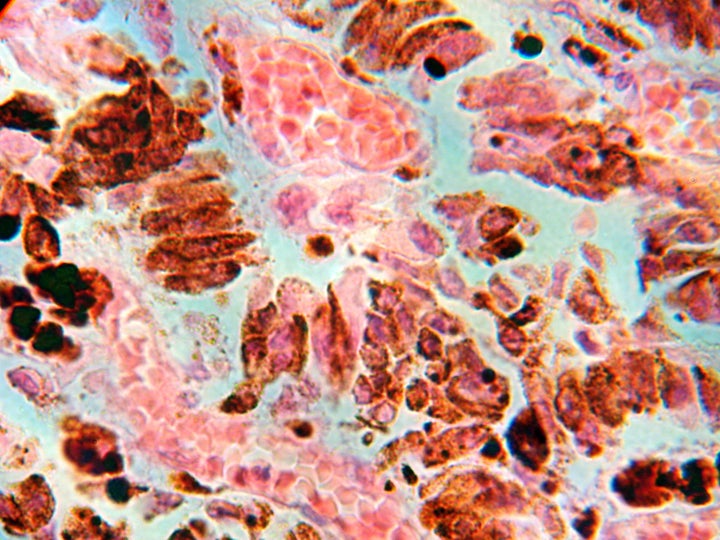
Former President Jimmy Carter announced in a press conference Thursday that cancer has spread to his brain, and that he will be receiving radiation over the next few months to treat it.
With candor that’s typical for Carter, but remarkable compared to how other American presidents have announced illnesses, the former president described that he first sought treatment for a bad cold in May. Instead, doctors found a mass on his liver that turned out to be melanoma. Surgeons removed the cancer, as well as about one-tenth of his liver, in an operation August 3, but discovered that the cancer had spread to his brain. These four lesions, measuring about two millimeters, were treated with radiation on August 20 and then again every three weeks. Carter is also receiving a drug that enhances his immune system.
“I’m perfectly at ease with whatever comes,” said Carter. “I do have deep religious faith, which I’m very grateful for, and I was pleasantly surprised that I didn’t go into an attitude of despair or anger or anything like that. I was just completely at ease.
“I’m looking forward to a new adventure,” he added.
Dr. Len Lichtenfeld, deputy chief medical officer of the American Cancer Society, praised the president’s transparency for providing valuable insight into how cancer can affect patients and their families.
"I suspect there are a lot of people out there right now who admire what the President has done by being so forthright and sharing so much about his diagnosis," Lichtenfeld told HuffPost. "He has shown so many people throughout the world what it means to have cancer, what goes through your mind, what the process is and how a cancer team should work for patients in terms of making the best decision for them."
Tim Turnham, executive director of the Melanoma Research Foundation, also praised Carter’s press conference for shedding light on the cutting edge therapies for melanoma.
“By specifying his treatment, President Carter will help ensure that these newer approaches penetrate more deeply into the oncology community, thus making these breakthroughs available to a larger group of patients,” Turnham said.
Carter's diagnosis
Lichtenfeld isn’t part of Carter’s care team, but based on past research, he said the prognosis is generally not good for 90-year-olds presenting with metastatic, or spreading, melanoma. But Carter is wise to seek treatment, Lichtenfeld explained, given the emerging focus on genomics, or genetically-targeted treatments. In fact, Carter’s robust schedule, his energy levels and mental sharpness are all good signs.
“President Carter is certainly at the cutting edge of people in his generation who have survived and thrived reasonably well, their age notwithstanding,” he said.
Indeed, said Lichtenfeld, the fact that doctors were able to detect such tiny lesions on the brain — a feat that wouldn’t have been possible a few years ago — is a promising step in Carter’s journey to wellness, as is his use of new drugs for melanoma. Only time will tell whether the cutting edge therapies Carter is undergoing will prove successful in combatting his melanoma, said Lichtenfeld.
"We all hope and pray that it’s going to be a positive journey, but we also have to understand and appreciate that it may not be,” Lichtenfeld concluded. “We have to respect the President’s decisions along the way about what he chooses to share and what he chooses to do."
More about melanoma
Melanoma is a type of cancer that mostly affects the skin -- specifically, melanocytes, which are the cells that produce our skin's pigment. An estimated 73,870 new melanoma cases will be diagnosed in America in 2015, and about 9,940 people are expected to die from it this year.
About 90 percent of all melanoma cases can traced to exposure to UV rays from the sun or tanning beds, which damage the DNA in melanocytes and cause them to mutate. But family history and other environmental factors can also play a role as well. White people are 20 times more likely to get it than black people, and the average age at diagnosis is 62. However, it’s one of the most common causes of cancer death in young women, notes Turnham.

Malignant melanoma.
Prevention starts with self-monitoring. Check your moles and freckles and take note if any of them begins to change, darken or spread. Other signs of melanoma include a sore that doesn’t heel, is painful, itchy or bleeding or a skin spot or lump that is shiny, waxy, smooth or pale. Some red lumps can be crusty, rough and scaly.
If caught early, doctors can perform surgery to remove the early-stage melanoma from the skin. If the melanoma is recurring or at a high risk for spreading, immunotherapy enlists your body’s own immune system to help fight the cancer. Targeted therapy, meaning drugs that target cancer cells without hurting normal cells, have been approved by the FDA to treat melanoma with a certain genetic mutation. Chemotherapy can be used to target cancer once it spreads throughout the body, but there hasn’t been much success in using it for melanoma patients. Radiation, like Carter is receiving, is a painless procedure for killing cancer cells generally administered after surgery.
In almost 50 percent of people who, like Carter, have metastatic melanoma, the cancer has spread to the brain. It can also spread to the lymph nodes, lungs, liver and bone.
Generally, once melanoma has spread throughout the body, survival rates plummet. Dr. Allan C. Halpern of the Skin Cancer Foundation notes that while the five-year survival rate for for melanoma patients is 98 percent when detected early (i.e., on the skin), that rate falls to 16 percent once the cancer has spread to the internal organs.
“The best chance for curing melanoma is to detect it early,” Halpern said. "People should be aware of the warning signs of skin cancer and seek medical attention for any concerning lesions."

A malignant melanoma on a patient's skin.
The most important thing to know about melanoma, said Turnham, is that the vast majority of cases are related to UV radiation — which means that most are preventable. Never tan in an indoor tanning bed or under the sun, and always use at least 30 SPF sunscreen when outdoors or in the car, even on cloudy days.
Don’t get sunburned, as people who have been sunburned more than five times are twice as likely to develop melanoma later on in life. That means seeking shade, wearing protective clothes, hats and sunglasses when possible.
People with blonde or red hair, as well as pale skin that freckles easily, are at increased risk for melanoma. People with weakened immune systems from HIV, organ transplants or other procedures are at increased risk of melanoma, as are people taking certain medications that make you more vulnerable to the sun’s rays.
